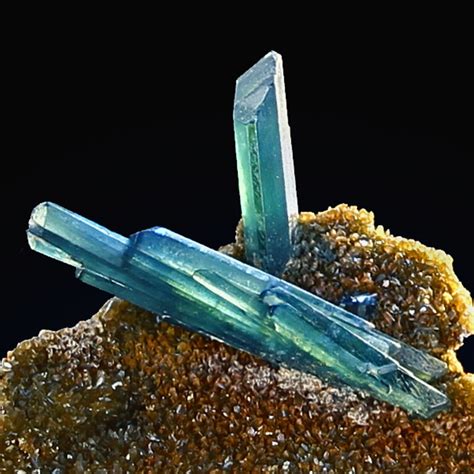Vivianite is a fascinating mineral with a unique property: it undergoes a significant transformation in color when unearthed and exposed to air, shifting from a colorless or pale green to vibrant blue. This quality often leads to intriguing scenarios in archaeological sites, where initially undetected features suddenly become apparent upon exposure. Vivianite’s composition, hydrated iron (II) phosphate, interacts with air in a process known as internal oxidation, where the mineral’s iron ions react with oxygen to produce the striking color change.
The mineral’s intriguing properties do more than just add a splash of color; they often complicate archaeological interpretations. Vivianite can grow on buried organic materials, including human remains. When archaeologists encounter unexpected blue coloration on or around bodies, it can initially lead to confusion about the site’s history and the conditions of burial. This aspect adds a complex layer to the already challenging task of piecing together historical narratives from physical remains.
Beyond its archaeological significance, vivianite holds a place in the study of historical pigments. Its rich blue hue, once fully developed, has similarities to prized pigments like ultramarine, which was historically made from the semi-precious stone lapis lazuli. The costliness of ultramarine in the past led to its reserved use for significant figures like the Virgin Mary in medieval art, highlighting the cultural and economic implications of pigment sources in historical art practices.
The naming of vivianite offers insight into the interplay between mineralogy and social history. Named by Abraham Gottlob Werner in 1817, the year he died, vivianite’s name could be traced back to either John Henry Vivian, a Welsh-Cornish politician and mineralogist, or Jeffrey G. Vivian, a lesser-known English mineralogist. This ambiguity touches on the broader topic of how minerals are named and the legacy of these names in scientific communities.
Interestingly, despite vivianite’s connection to life—given its growth from decay and its vibrant ‘living’ blue—its name isn’t directly derived from ‘vital’ or ‘life.’ Instead, the etymology of ‘Vivian’ has roots in Latin, where ‘Vivianus’ derives from ‘vivus,’ meaning ‘alive.’ This play on words and meanings enriches the narrative of vivianite, blending the scientific, literal, and metaphorical into a single thread.
In the world of mineral collection and enthusiast discussions, vivianite is appreciated not only for its scientific interest but also for its aesthetic qualities. Collectors like msrenee, who owns a piece dark green enough to appear black until light reveals its true nature, treasure vivianite for these dramatic transformations and the subtle beauty they bring to a collection. This duality of vivianite, both unassuming and dramatically vivid upon interaction with light, mirrors the dual nature of many scientific phenomena—quietly existing until conditions bring their characteristics to light.
The applications of vivianite extend into more modern and perhaps unexpected territories, such as the creation of jewelry and potentially even eco-friendly burial alternatives. Websites like Etsy showcase vivianite jewelry, highlighting the mineral’s transition from a scientific curiosity to a wearable art form. Moreover, discussions around using vivianite’s organic origins for memorial items like diamonds from cremated remains underscore the evolving relationship between humans, minerals, and the natural cycle of life and decay.
Despite the non-trivial challenges it presents to archaeologists, vivianite remains a subject of fascination and study. Its presence at a site can turn ordinary digs into opportunities to reconsider both historical and contemporary understandings of material change and preservation. As science advances, perhaps the full story of vivianite and its blues will unfold, merging past insights with future discoveries to paint a fuller picture of our complex interaction with the natural world.


Leave a Reply